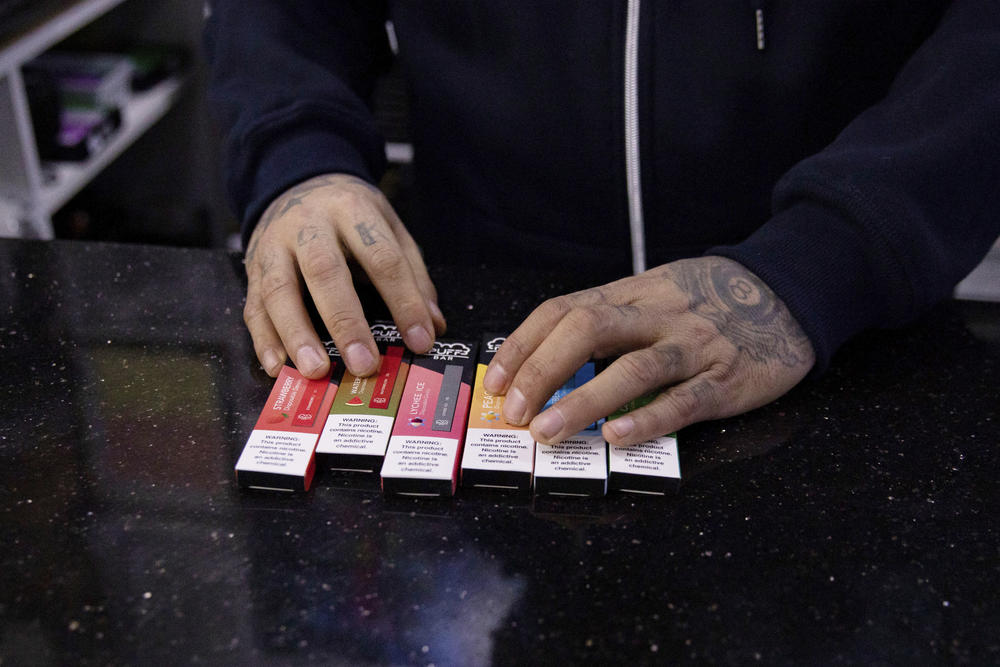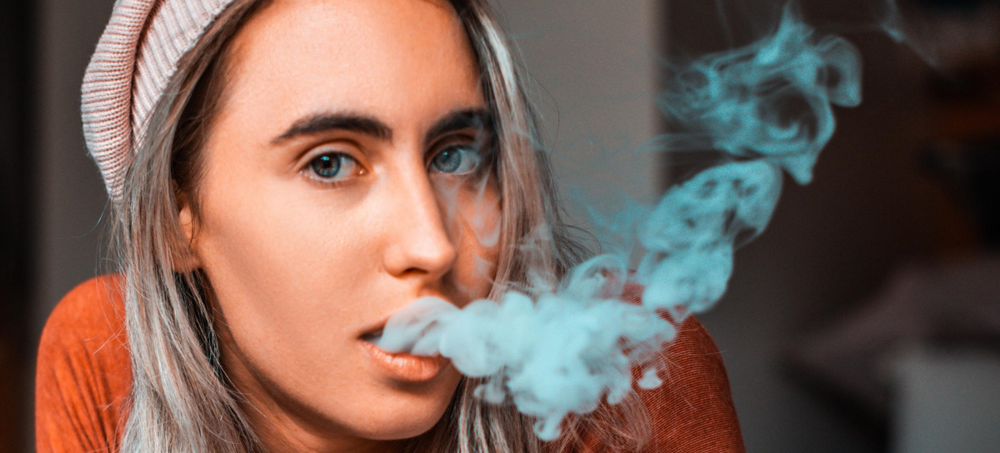
Caption
In this Jan. 31, 2020 photo, a vape shop manager shows Puff Bar flavored disposable vape devices at a store in the Brooklyn borough of New York. On Thursday, Feb. 6, 2020, the U.S. government began enforcing restrictions on flavored electronic cigarettes aimed at curbing underage vaping. But parents, researchers and students warn that some young people have already moved on to a newer kind of vape that isn't covered by the flavor ban — disposables.
Credit: (AP Photo/Marshall Ritzel)


